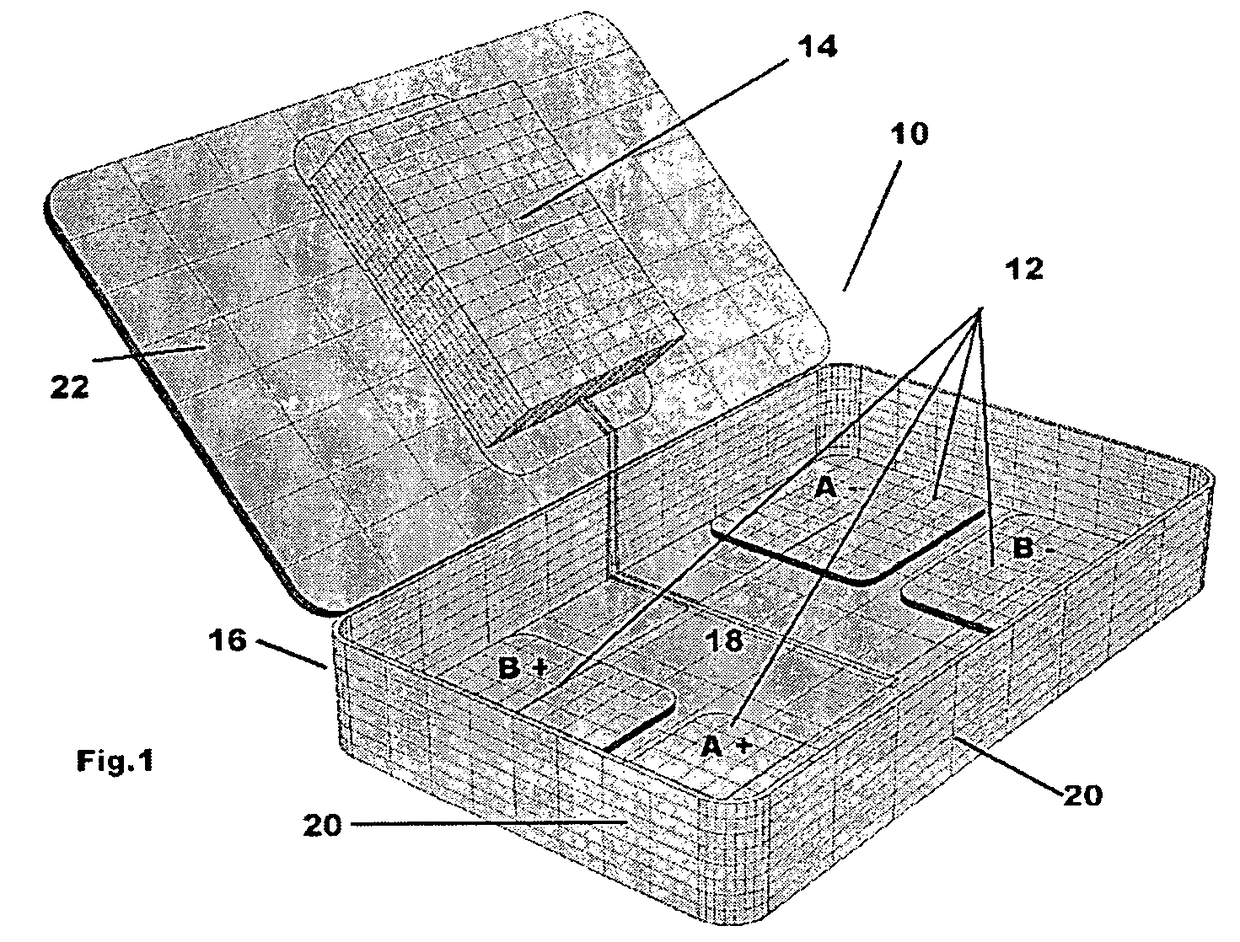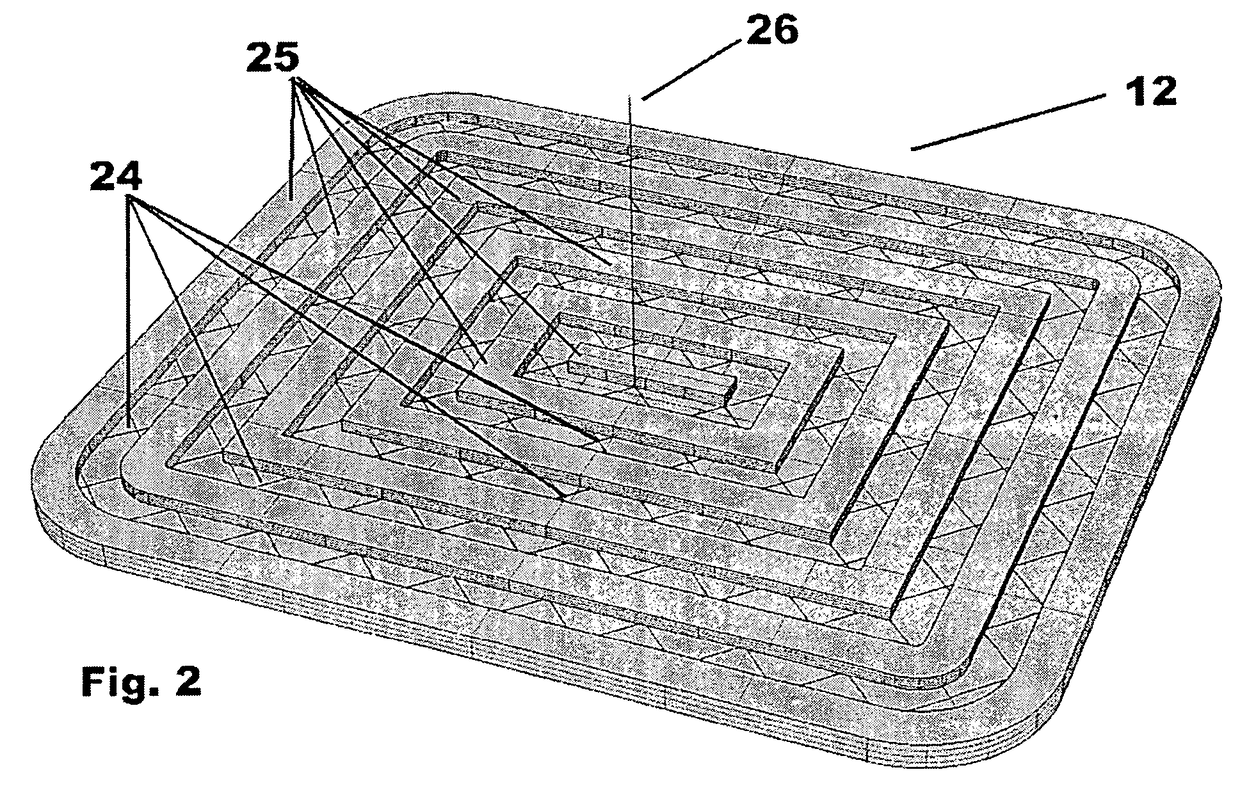Transcutaneous electrical nerve stimulator with hot or cold thermal application
a nerve stimulator and electrical nerve technology, applied in the field of transcutaneous nerve stimulators, can solve the problems of aggravated inflammatory response, less frequent choice of cold therapy by individuals, decreased blood supply,
- Summary
- Abstract
- Description
- Claims
- Application Information
AI Technical Summary
Benefits of technology
Problems solved by technology
Method used
Image
Examples
Embodiment Construction
[0028]The present invention is directed to a transcutaneous electrical nerve stimulator (TENS) that is capable of simultaneously delivering hot or cold thermal therapy for pain relief. The device includes electrodes and a thermal reservoir body that are contained within the same housing or medium which comprises the device. The electrodes typically have relatively low resistivity—i.e. under 2 kΩ / mm thickness and the thermal reservoir has a high thermal mass.
[0029]The electrodes and the non-electrode regions of the device have similar thermal conductivity to enable somewhat uniform heat transfer and similar mechanical properties to minimize separation stresses. The device possesses adequate thermal conductivity for effective heat transport but low enough thermal conductivity to minimize discomfort and damage if the device should inadvertently be chilled below recommended therapeutic limits.
[0030]The electrodes are permanently fixed and therefore incapable of curling away from the ski...
PUM
 Login to View More
Login to View More Abstract
Description
Claims
Application Information
 Login to View More
Login to View More - R&D
- Intellectual Property
- Life Sciences
- Materials
- Tech Scout
- Unparalleled Data Quality
- Higher Quality Content
- 60% Fewer Hallucinations
Browse by: Latest US Patents, China's latest patents, Technical Efficacy Thesaurus, Application Domain, Technology Topic, Popular Technical Reports.
© 2025 PatSnap. All rights reserved.Legal|Privacy policy|Modern Slavery Act Transparency Statement|Sitemap|About US| Contact US: help@patsnap.com



